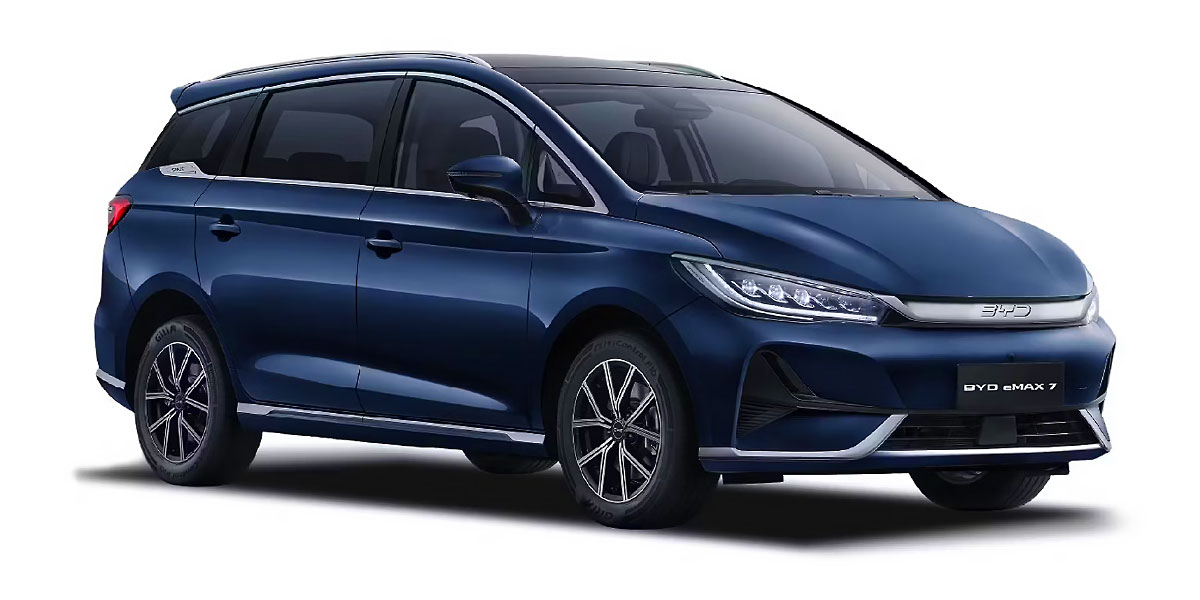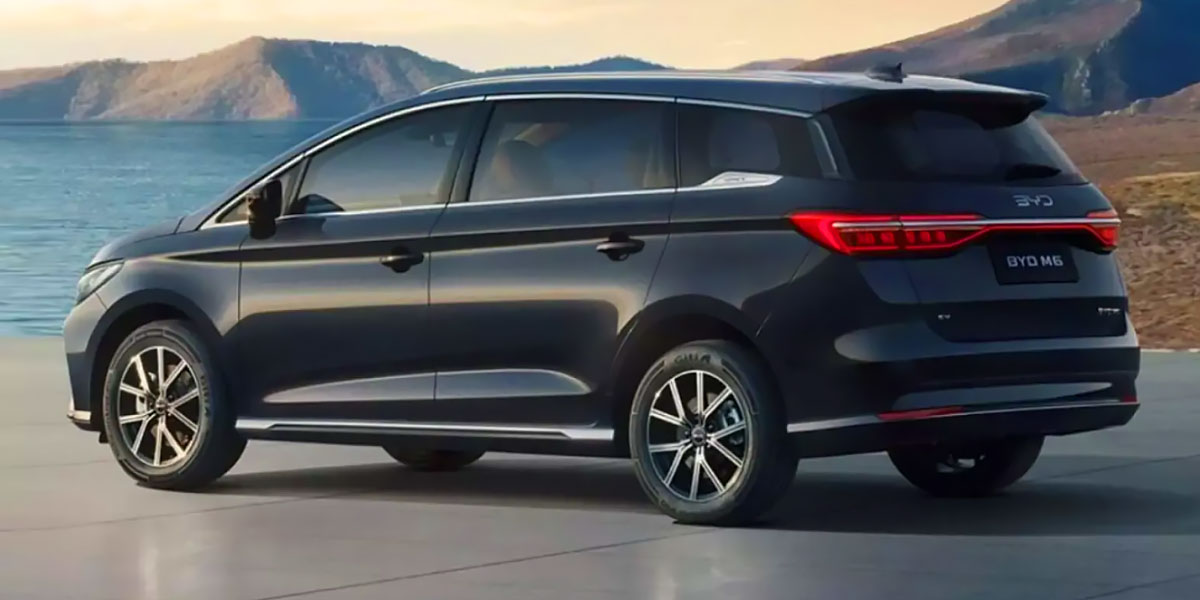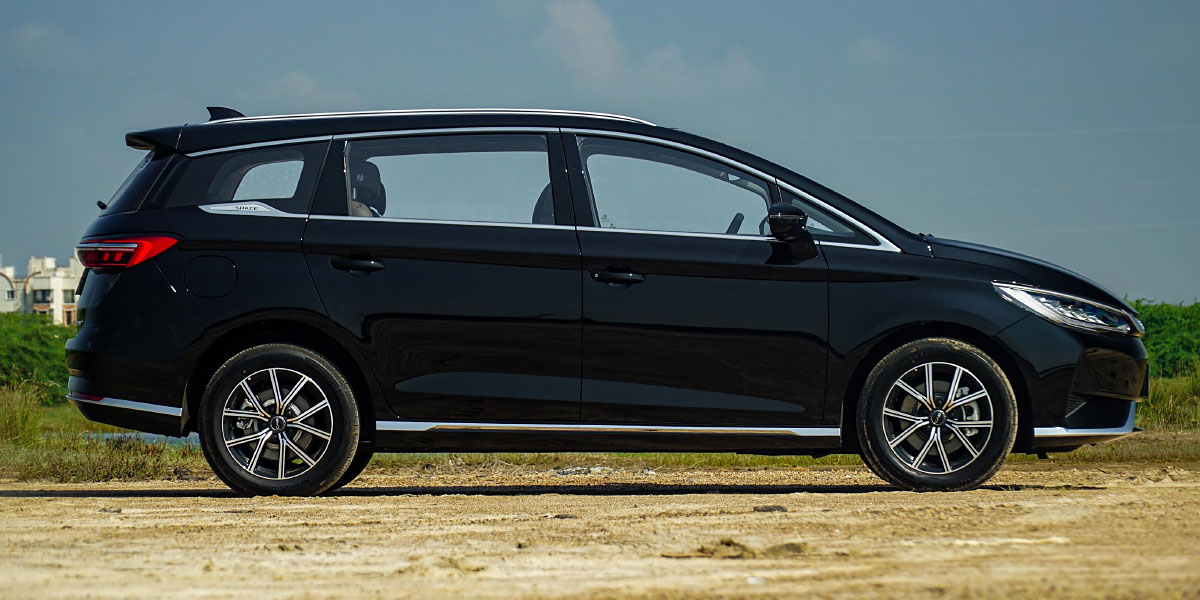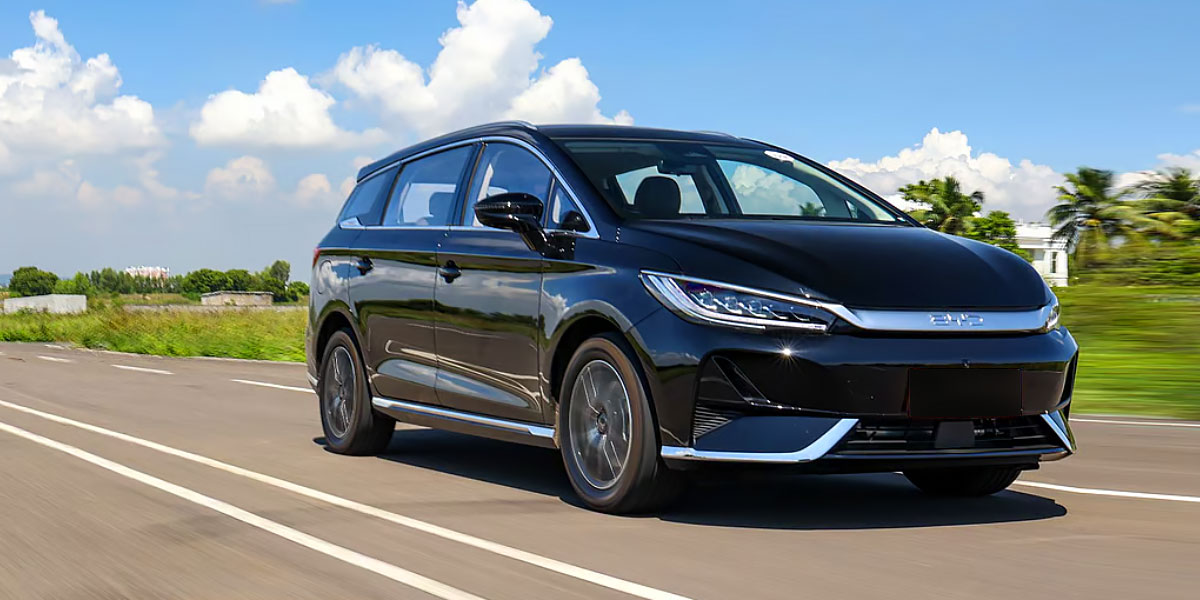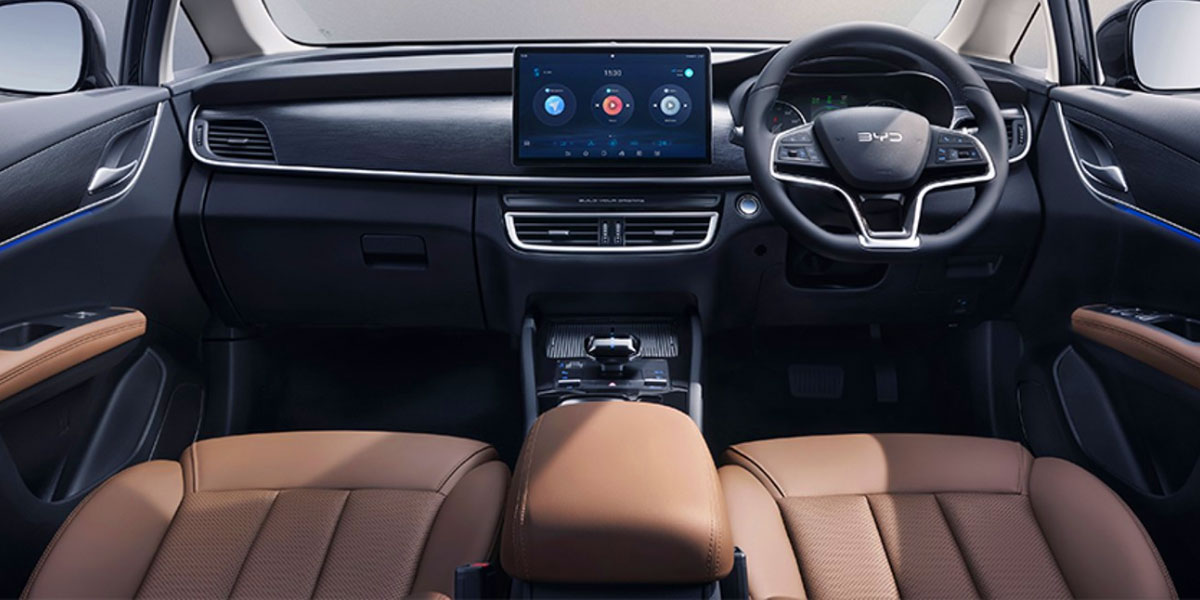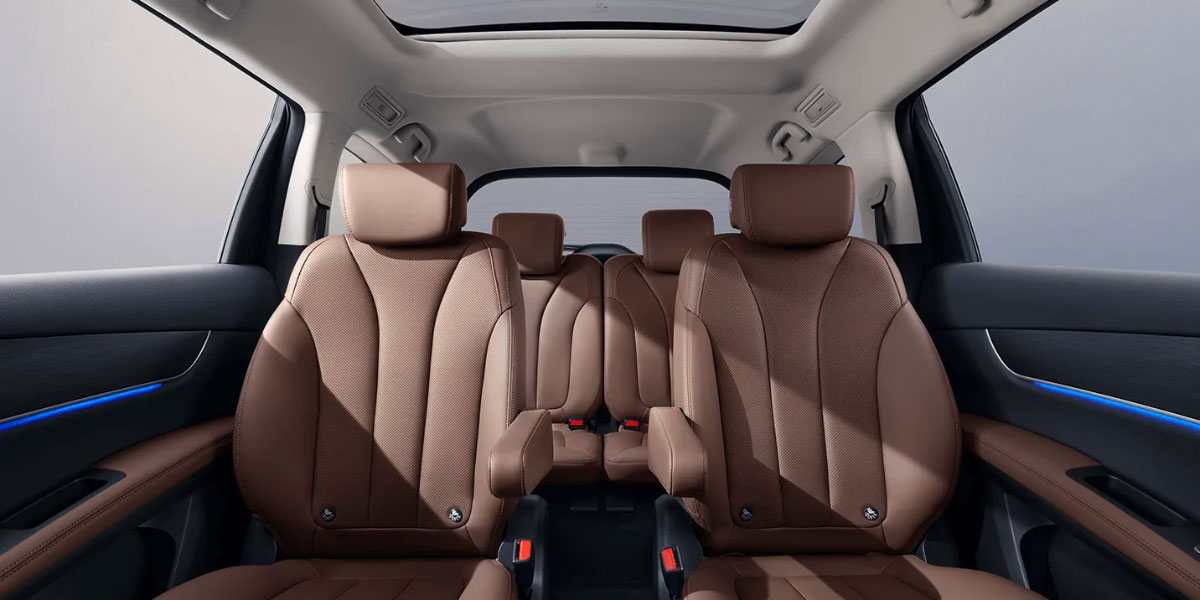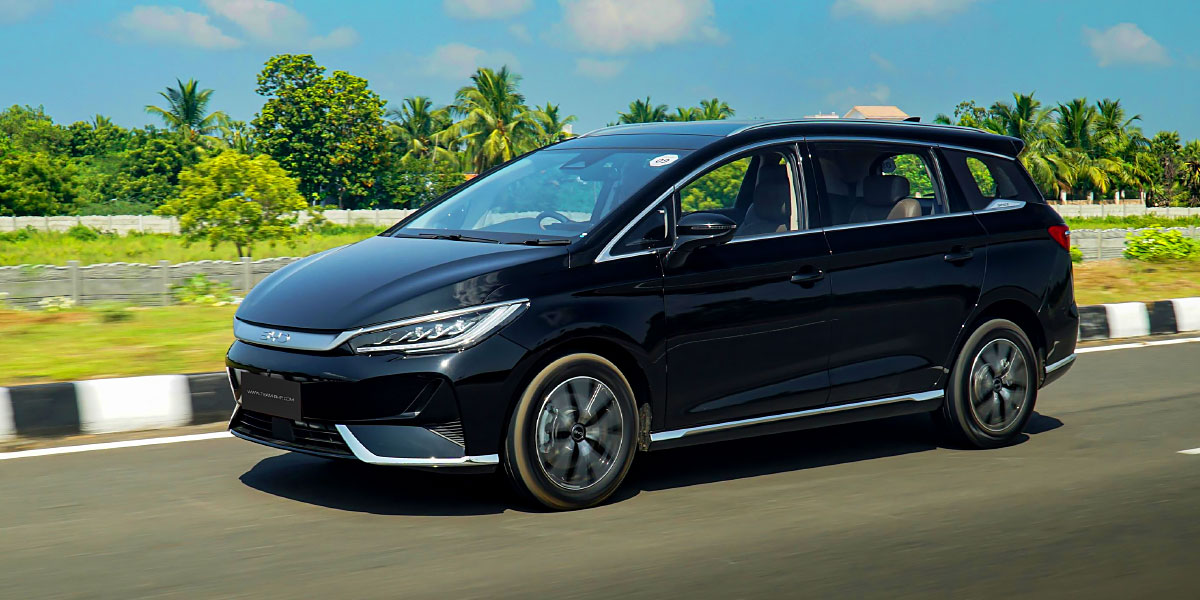BYD eMax 7
User Rating: 4.85 / 5





What is the BYD eMax 7?
The BYD eMax 7 is a Chinese-made electric MPV launched in 2025, priced from $31,400 (€29,000). It delivers 204 hp, a top speed of 180 km/h (112 mph), up to 530 km (329 mi) range, and fast-charges to 80% in 37 minutes—perfect for families seeking electric versatility.
BYD eMax 7 price:
US$ 31400 *
| manufactured in | China |
| model year | 2025 |
| electric range (km) | 530 |
| battery (kWh) | 72 |
| max. speed (km/h) | 180 |
| 0 to 100 km/h (sec) | 8.6 |
| power (h.p.) | 204 |
| car type | compact MPV |
| drive type | FWD |
* Minimum price set by the manufacturer, excluding taxes and additional options
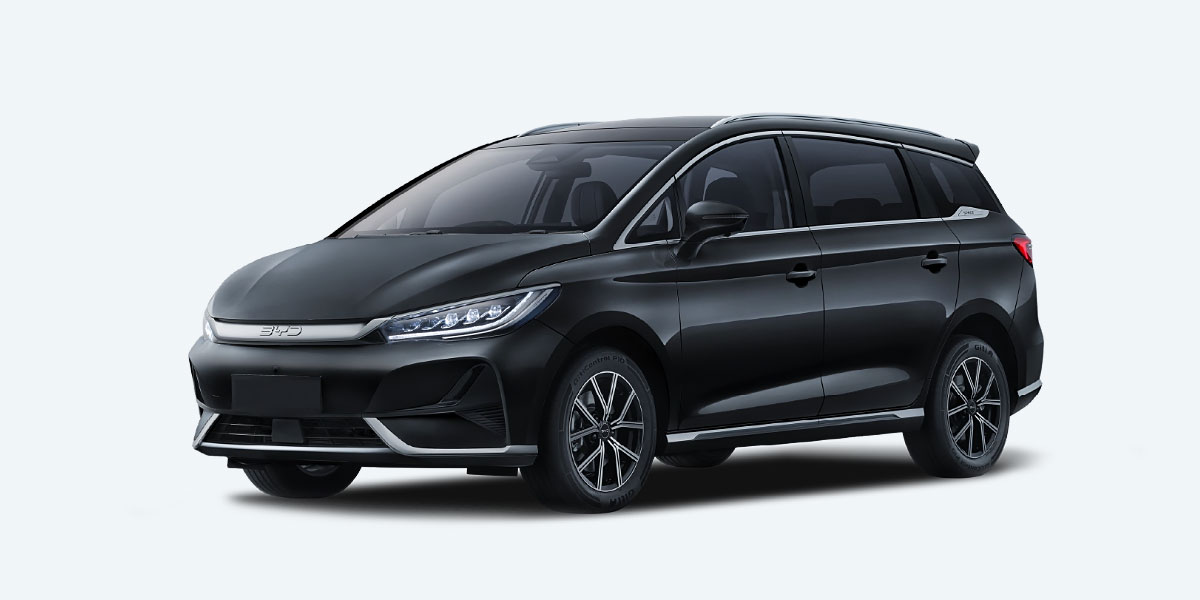
Exterior and Interior photos of BYD eMax 7
BYD eMax 7 Review
BYD eMax 7: The Electric MPV That Hauls More Than Just Groceries
Looking for a three-row EV that won’t break the bank or your patience? Meet the BYD eMax 7. Priced at just $31,400 (€29,000), this family-focused compact MPV from China brings serious practicality to the table, with up to 530 km (329 miles) of claimed range and seating for up to seven. It's BYD’s counter to the gas-guzzling Toyota Innova and the like—and it comes out swinging.
- Manufactured in China, the BYD eMax 7 launched in 2025 with the goal of capturing premium family EV buyers.
- Starting from just $31,400 (€29,000), it delivers exceptional value for an all-electric 7-seater MPV.
- It’s built off the BYD e6 platform but upgraded inside and out for more private consumer appeal.
eMax 7 Specs: Big Battery, Big Promise
Battery
Here’s where the eMax 7 gets serious. It offers two battery options: a 55.4 kWh pack good for 420 km (261 mi) or a beefier 71.8 kWh setup stretching to 530 km (329 mi) on the ARAI cycle. Real-world driving? Expect around 350–450 km (217–280 mi), depending on your throttle foot. DC fast charging at 115 kW juices it from 0 to 80% in just 37 minutes, and the 7 kW AC charger comes standard.
- Battery capacity: 71.8 kWh (Superior)
- Range: 530 km (329 mi)
- Charging time (DC 115 kW): 0-80% in 37 minutes
- V2L (Vehicle-to-Load) support included
Performance
With 204 horses (152 kW) under the hood and 310 Nm (229 lb-ft) of torque, the eMax 7 clocks 0-100 km/h (0-62 mph) in a respectable 8.6 seconds. Not bad for a people hauler. It’s got front-wheel drive and three driving modes—Eco, Normal, and Sport—that tweak responsiveness, though don’t expect racecar vibes.
- Power: 204 hp (152 kW)
- Torque: 310 Nm (229 lb-ft)
- Top Speed: 180 km/h (112 mph)
- 0 to 100 km/h: 8.6 seconds
The Premium variant gets a 55.4 kWh battery and 163 hp, while the Superior packs 204 hp and the larger 71.8 kWh battery—both are solid, but the Superior shines for range and punch.
Exterior and Interior Design: Where Practical Meets Polished
Exterior
The eMax 7 ditches the barebones vibe of its fleet-focused sibling, the e6, and embraces a more refined look. “Dragon Face” LED lighting, slick 17-inch 10-spoke alloys, and a grille-less EV snout give it modern flair. Rear LED bars and chrome trim dress things up while four exterior color choices add a personal touch. Size-wise, it maintains an MPV footprint but hides it well with a teardrop silhouette.
Interior
Inside, it’s a tech-laden affair. You get 6- or 7-seat layouts, a rotating 12.8-inch touchscreen, ventilated front seats, wireless charging, and a powered tailgate. The leatherette trim and panoramic roof raise the comfort bar, but the audio system and lack of wireless Apple CarPlay leave room for upgrades.
Pros and Cons
Pros
- Affordable price for a full-size electric MPV
- Impressive 530 km (329 mi) range
- DC fast charging to 80% in 37 minutes
- Roomy and flexible interior with 6- or 7-seat options
- Refined ride quality and useful drive modes
Cons
- Underwhelming sound system
- No wireless Apple CarPlay or Android Auto
- Raised floor impacts long-trip comfort in third row
- No frunk storage
- Minimal difference between drive modes
Conclusion: A Family EV That’s Built for More Than Just Carpool Duty
So here’s the rundown. The eMax 7 doesn’t try to be flashy. Instead, it focuses on doing the job—and doing it well. It’s quick enough, charges fast, goes far, and has a cabin that makes long hauls feel less like punishment. For families, fleet buyers, or anyone fed up with fuel stops and tight third-row legroom, it’s a practical, future-proof pick that keeps your wallet happy and your conscience cleaner. No gimmicks—just a solid EV that knows what its buyers want.
Manufacturer: BYD Auto
Related Video
Comparison:
If you're sizing up the electric MPV scene, the BYD eMax 7 faces off against a small but growing pack of seven-seat EV haulers. It rubs shoulders with the Mercedes EQT, Maxus MIFA 9, Volkswagen ID. Buzz, and Kia EV9—each offering a mix of family-friendly form and battery-powered function, but with some major differences once you start digging into the specs.
Range
The eMax 7 claims 530 km (329 mi) on a full charge. That’s more than the Mercedes EQT at 282 km (175 mi) and almost neck-and-neck with the ID. Buzz at 423 km (263 mi). The Kia EV9 edges ahead with up to 541 km (336 mi), and the Maxus MIFA 9 holds strong at 520 km (323 mi). Real-world range? Expect around 350–450 km for the eMax, which beats most but falls just shy of the EV9’s highway stamina.
Acceleration
Clocking 0–100 km/h (0–62 mph) in 8.6 seconds, the eMax 7 is zippier than the MIFA 9 (10.5s) and EQT (11.2s), but slower than the AWD Kia EV9 GT-Line, which hits 100 km/h in under 6 seconds. The ID. Buzz is a mid-pack player at 10.2 seconds.
Power
At 204 hp (152 kW), the eMax 7 outguns the Mercedes EQT (122 hp), and ID. Buzz (201 hp), and matches the MIFA 9. Still, the dual-motor EV9 leaves them all in the rearview mirror with up to 379 hp (283 kW).
Charging Time
The eMax 7 pulls ahead in fast charging: 0–80% in 37 minutes with a 115 kW DC connection. The Kia EV9 is faster thanks to its 800V system, charging to 80% in just 24 minutes. The ID. Buzz needs around 30 minutes, while the MIFA 9 and EQT stretch toward the 45-minute mark.
Price
With a base price of $31,400 (€29,000), the eMax 7 undercuts nearly every rival. The Mercedes EQT starts around $50,000 (€46,200), the ID. Buzz hits north of $60,000 (€55,400), the MIFA 9 nudges $63,000 (€58,000), and the Kia EV9 charges past $70,000 (€64,500). For budget-conscious buyers who still crave EV substance, the eMax 7’s pricing is hard to beat.
F.A.Q.:
What is the battery capacity of the eMax 7?
The eMax 7 comes with a 71.8 kWh battery in the Superior variant and a 55.4 kWh option in the Premium variant.
How long does it take to charge the eMax 7 battery?
With 115 kW DC fast charging, the battery goes from 0 to 80% in 37 minutes. A 7 kW AC charger is also included.
What is the top speed of the eMax 7?
The maximum speed is 180 km/h (112 mph), which is more than sufficient for urban and highway driving.
What is the range of the eMax 7?
The eMax 7 has a claimed range of 530 km (329 mi) with the Superior battery and around 420 km (261 mi) with the Premium variant.
What is the power output of the eMax 7?
The Superior variant produces 204 hp (152 kW), while the Premium delivers 163 hp (122 kW).
What is the price of the BYD eMax 7?
The starting price is $31,400 (around €29,000), making it one of the most affordable electric MPVs with three-row seating.
What kind of drive system does it use?
It features front-wheel drive (FWD), suitable for daily use and stable enough for long-distance trips.
How many people can it seat?
It offers 6- or 7-seat configurations, with ample head and knee room across all three rows.
Does the eMax 7 have V2L capability?
Yes, it supports vehicle-to-load (V2L), allowing it to power small appliances or devices externally.
Does the eMax 7 include Apple CarPlay or Android Auto?
No, the system currently lacks wireless Apple CarPlay and Android Auto support.
Latest News:
Related news from the different online sources
December 04, 2025 The updated BYD M6 minivan was seen in China during road tests with a redesigned interior. It is a new energy MPV for global markets. The BYD M6 was previously available in China under the Song Max name. The spotted variant adopts a plug-in hybrid powertrain.
The BYD Song Max first entered the Chinese market in 2017 as a petrol-powered MPV. Shortly after, BYD launched PHEV and BEV variants of the Song Max. It was updated in China for the last time in 2022 before leaving the market. However, this model’s BEV variant entered overseas markets with two naming variants: M6 and eMax 7. The updated BYD M6 was recently spotted in China, featuring a plug-in hybrid powertrain and a new interior.

